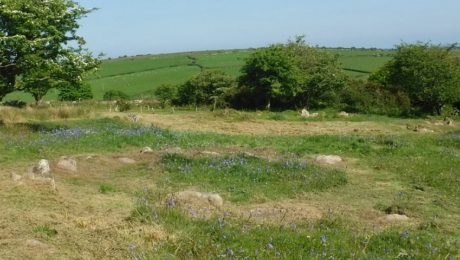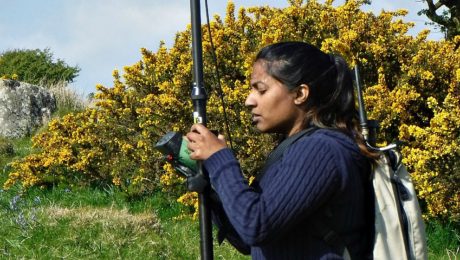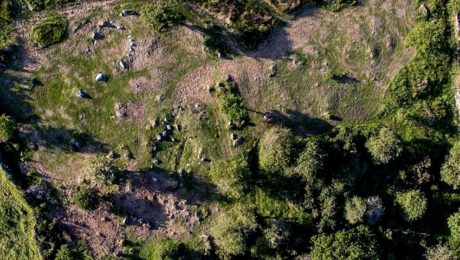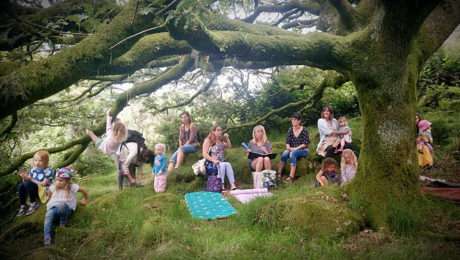Bronze Age houses in Cornwall weren’t at all like the ones holidaymakers flock to today. Much like the rest of Britain at the time, houses were either round or oval in shape, and only one story tall. Their walls would have been made of either stone, or of wattle and daub, in between posts that supported both the wall and the roof.
This type of roundhouse has been known to archaeologists since as early as the 1930s, especially in Cornwall where you can still see the low, circular stone walls pockmarking the landscape.
At first, it was thought that, within Cornwall, these houses were regular in shape and only built in the uplands. But that’s starting to change; archaeologists have recently observed that there are also buildings spread across the lowlands, and that many of them are a slightly different shape to the upland buildings. Were these settlements used by different people? Were they just adapted for different roles? Or is there simply a different house-shape for a different region?
St Neot, on the southern edge of Bodmin Moor, sits neatly on the transition between the uplands and the lowlands, which means the recently discovered settlement at West Northwood Farm could be crucial to understanding these differences.
During the Bronze Age, round houses were where people worked, prepared food, and made tools. The activities carried out in specific buildings within settlements could vary greatly, and archaeologists are still unsure how houses within settlements interacted. Was each house used for one role, or was each house occupied by a separate family? And how does the appearance of these settlements relate to other trends in the archaeological record?
The Early Bronze Age is characterised by the construction of impressive monuments, but little evidence for where people actually lived during this time. Conversely, during the Middle and Later Bronze Age, people seem to stop building their impressive monuments. At the same time, roundhouse settlements begin to appear. Why?
For a long time, archaeologists have recognised the large amount of time and effort taken to build homes in the Bronze Age. Not only did the inhabitants have to build their home entirely by hand, they would also have to dig enclosures to surround their settlement, and build dry stone walls to raise their stock to the point. The time and effort required to construct a roundhouse has led many archaeologists to wonder whether setting up a new home would have required whole communities to come together. And this coming together of the community could mean that homes became the new monuments of the Bronze Age.
If so, it’s not surprising then that people’s homes would become important locations used for far more than just eating and sleeping. People also seem to have marked special occasions by burying something important within them, such as a favourite artefact, valuable metal items or even the ashes of a loved one.
But these homes were not just about bringing people together. For the first time in Britain, they also allowed people to leave an indelible mark about what belonged to who, to hide actions in private spaces, and to highlight the differences between groups. We know that there was some violence in the Bronze Age, and sometimes attempts to defend homes from this.
The recently discovered Bronze Age village at West Northwood Farm is surrounded by a shallow ditch, which archaeologists classify as an ‘enclosed settlement’. Could this represent a defensive ditch built as violence intensified? Or was it surrounded for another reason? We don’t yet know when it was built, or how big it originally was, but that’s something that’s definitely worth finding out.
The next big question is what happened once a roundhouse settlement was abandoned. Many now remain as little more than stone circles, barely visible in the uplands of Cornwall, but otherwise left just as they were abandoned 3,000 years ago. So far, excavations at West Northwood Farm have shown signs that some of the roundhouses may have been reoccupied during the Iron Age. Did people abandon the site, and later choose to return? How long did they stay? Or could it be that the site was inhabited continuously for 500 years?
There are some suggestions that roundhouses would have been deconstructed in such a way as to give them their own burial. We don’t yet know what sort of rituals were carried out at West Northwood Farm, but by excavating two roundhouses and finding what has been left behind by their previous owners, we might get a glimpse.
With continued excavations of the round houses and enclosure ditch at West Northwood Farm, we hope to start answering some of these enormous questions about the lives, the homes and the cultures of Cornwall’s ancient inhabitants, and the dramatic period of change that they lived through.





